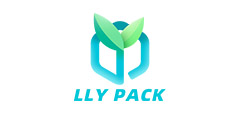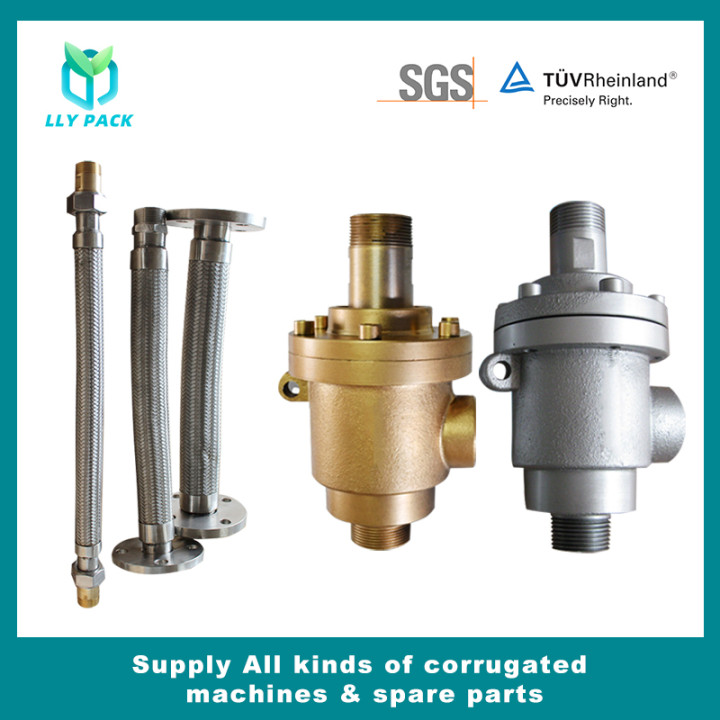[Abstract] This article reviews the research status of mechanical properties of corrugated cardboard and honeycomb paperboard at home and abroad. It is believed that the research on the mechanical properties of composite paperboard mainly focuses on the research of static structure stability and dynamic buffer performance. At the end of the article, the future research tasks and directions are proposed.
Key words: corrugated cardboard; honeycomb cardboard; buckling
Honeycomb paperboard is a new type of environmentally friendly packaging cushioning material. It consists of a paper honeycomb sandwich panel. It has high pressure resistance and good mildness: medium performance, as well as heat preservation, heat insulation and sound insulation performance. It is light and strong. High, large-scale, low-cost, easy to recycle, etc. It is mainly used for packaging cartons, packaging cushions, and trays, etc. It is used in the packaging of electronic and electrical products, precision instruments, household appliances and other products, and can replace wood packaging materials. After special treatment can be fire-retardant, moisture-proof, waterproof, anti-mildew and anti-static effect. The disadvantage is that the honeycomb carton is not foldable and the production automation is low. In the following, corrugated board and honeycomb board are collectively referred to as composite board.
The strength of the packaging container is a key factor in protecting the product from damage. It is necessary to study the mechanical properties of the composite board and optimize the structural parameters of the packaging container so as to achieve the purpose of saving the financial resources and resources.
1 Review
At present, the research on composite cardboard mainly focuses on two aspects. One is the study of the mechanical properties of materials and the other is the study of the mechanical properties of structures.
The mechanical properties of materials are the basis for the study of composite cardboard. Domestic and foreign literature have studied this from two perspectives. The first is to study the mechanical properties of core paper and facial tissue on composite paperboard, and to study the constitutive relations such as the elastic modulus and shear modulus of paper, which is a basic research. On the other hand, composite paperboard was studied as a composite material. Study the rigidity characteristics of the unit board material in all directions. This research should be based on the previous material research. In this regard, studies of corrugated composite boards such as Tomas Nord-stand et al. He used corrugated cardboard as an orthotropic composite material to obtain the stiffness of each direction of the unit paperboard by finite element method or material mechanics method. At the same time, the transverse shear modulus in the main direction of five different types of corrugated cardboard was measured by two test methods, and compared with the results obtained by the finite element method and analysis method, in order to provide the designer with the processing process. Effect of Transverse Shear Stiffness on Corrugated Paperboard. And M. E. Biancolini and C. Brutti started from the most basic standard test. Here, the previous experience was replaced by the mechanical and microscopic mechanical properties of corrugated cardboard. Through the computational comparison of the fine finite element model, the axial buckling of a certain type of box was finally obtained. Load. The author's ultimate goal is to propose an optimization method for the design of corrugated cardboard, so he must meticulously study the influence of various parameters on the buckling load of the cardboard box. There are also experimental studies on composite cardboards by Xiong Hongzhi and Yan Min.
The research on the mechanical properties of paperboard structure is also divided into two parts, some of which are the study of the static or quasi-static mechanical content, mainly the stable properties of honeycomb paperboard as a kind of structure, such as buckling and post-buckling. The buckling is for linear elastic materials. The nature of the material or structure tends to exhibit nonlinear properties, or the structure can withstand a certain load after buckling until it collapses, which requires post-buckling studies. The buckling of cartons or liners used as packaging is mainly used for calculating cargo stacking and other aspects. In this regard, Tomas Nordstand et al. presented the analysis methods for the buckling and post-buckling of corrugated paperboard based on the above-mentioned composite materials research, and also compared the results of tests and finite element analysis. M. E. Biancolini finally obtained the buckling of the cardboard box based on the above composite materials research. Guo Yanfeng, Xu Wencai, and Wang Mei studied the buffer properties of honeycomb paperboard. The lateral static pressure curves of four different thicknesses of honeycomb paperboard were given through experiments, which showed that the honeycomb paperboard was divided into elastic phase, slow elastic phase and plasticity during the crushing process. In the deformation stage, an equivalent spring damper model of a spring damper is given. An Experimental Study on the Static Compression Characteristics of Honeycomb Paperboard under Different Velocities . Sun Yaping "" used the test to study the flat pressure performance of the corrugated paperboard, and studied the impact of parameters such as the aperture ratio and the height of the honeycomb plate on the crankshaft pressurization. Sun Yaping "" simplified the axial buckling of honeycomb paperboard to be equivalent to the buckling problem of the square sheet. Using the theory of large deflection of the flat plate and the ring compression strength as the yield strength, the formula for calculating the axial buckling of the honeycomb paperboard was obtained, and Combined with the test, it is believed that the results obtained by this theory are more consistent with the test results than the results obtained by the elastic buckling theory. Research on foreign honeycomb structures has focused on the aerospace and automotive industries. The materials are generally metal (aluminum), and the research is mainly on the buckling load on the inner side of the plate. Ole Thybo Thomsen et al. pointed out that for the honeycomb panel structure, under the condition of load buckling in the internal plane of the local element, the author thinks that the previous local boundary conditions are not applicable. This design method is unreasonable and the test results also show that the traditional design method provides The results are too conservative. The authors experimentally presented a new method for predicting the in-plane load buckling, which was specifically used for buckling inside the unit. Since the honeycomb structure is a periodic structure, N. Ohno, D. Okumur and U. NoguehiL establishes the Lagrangian form of finite deformation homogenization when the honeycomb structure is locally destabilized, and based on certain assumptions, the microcosmic symmetrical bifurcation condition satisfied by local instability is given.
The theoretical result is consistent with the instability modes observed in previous experiments. This mode cannot be clarified using previous theories. Stein A. Berggren et al. discussed the theory of the square honeycomb structure as the in-plane stiffness property of the composite structure. Based on this theory, the finite element method was then used to optimize the prism orientation of the square grid.
The other part of the mechanical properties of the composite slab structure is the study of dynamics, which is mainly applied in the aspects of anti-vibration and anti-impact. Guo Yanfeng and Zhang Jinghui studied the buffer and anti-vibration performance of four kinds of honeycomb paperboards with different thicknesses based on drop, mid-blast test and vibration test. The empirical formula of dynamic cushioning curve and its characteristic coefficient, peak frequency of vibration transmission rate curve and transmission were obtained. The rate and damping ratio provide basic data for the promotion and application of honeycomb paperboard in cushioning and anti-vibration packaging. Zhang Junling and Mao Zhongyan plotted the vibration transfer rate curves of different thicknesses of honeycomb paperboard in the sinusoidal variable frequency vibration test, and plotted the different attenuation coefficients. Guo Yanfeng, Zhang Jinghui, Xu Wencai, and Pan Songnian plotted the vibration transfer rate curves for different thicknesses of honeycomb paperboard in the sinusoidal variable frequency vibration test, and plotted the different attenuation coefficients. The study abroad as a packaging composite board is relatively lacking, but there are many researches on the honeycomb structure. Woo-Young Jung, Amjad J. Aref introduced a new type of anti-seismic system consisting of a honeycomb structure polymer and a solid filler. The test was used to test the dynamic response of the medium under different frequencies and strain conditions. A finite element numerical model was also given. The model considers the effects of different temperatures and different input frequencies and compares them with experimental results. Chung J. WaasAM's aim is to study the dynamic response and energy absorption of honeycomb structures under the impact of high-speed locomotives in the automotive industry. The purpose is to design a robust, test-resistant circular unit honeycomb structure to detect automobile Hit performance. The authors used the test method and 3D finite element method to study the relationship between the static buckling load of the honeycomb protective structure and the crushing deformation, energy absorption and structural parameters under high-speed impact. The author's limited The metamodel is in good agreement with the test results. A. Honig, and W. J. Stronge studied the effects of high-speed, mid-down compression waves on the crushing of honeycomb structures. T. Saitoetc. In order to study the vibration and noise characteristics of aluminum honeycomb paperboard, a unit of honeycomb paperboard was processed into an orthotropic iron mosque beam. The stiffness of the cell was obtained by two optimization methods. Then the honeycomb aluminum plate was studied by the finite element method. Dynamic characteristics.
Conclusion For the domestic and foreign research status, the static study of corrugated cardboard is relatively mature, but using parametric studies, the ultimate buckling optimization method is still relatively lacking. There are many experimental researches on honeycomb paperboard at home, and the research on the pressure on the surface has not been involved. However, the research on foreign materials is mainly on the application of honeycomb structure in the fields of aerospace, automobile industry and earthquake protection, and the lack of research on honeycomb paperboard as packaging materials. It will help us to study composite cardboard.
3 Future research tasks
The future research of composite paperboard mainly starts with the three methods of testing, numerical calculation and theoretical analysis, and solves the following two problems:
1) Study on static stability of composite paperboard. The constitutive relationship of the composite structure material was obtained by experiments, and the parameterization of the composite structure was studied by numerical or experimental methods. The theoretical system of local buckling and overall buckling of corrugated cardboard and honeycomb paperboard was established, and the theoretical model of post-buckling was proposed and the theory was put forward. The results are compared with the numerical analysis results of the finite element and the experimental results to ensure the rationality of the theoretical model. According to the buckling theory, the optimal design method of corrugated cardboard and honeycomb paperboard is proposed.
2) Study on dynamic buffering properties of composite paperboard. It mainly studies the response of honeycomb paperboard under external shock or shock. Since paper is a viscoelastic material and the material structure is relatively complex, the constitutive relationship is generally treated as an orthotropic material along the fiber direction and the vertical fiber direction. The stress-strain curve of the paper is to be obtained finely through experiments. Then, the finite element model of honeycomb paperboard was established, and its zero-direction and acceleration transmission under different sinusoidal excitation conditions were studied, and different attenuation coefficients were plotted. And compared with the experimental study. Using the finite element calculation results to fit the spring damping model of honeycomb paperboard cushioning performance, the function relationship between honeycomb paperboard structural parameters and spring damping model parameters was established to facilitate practical application of engineering.
3 Conclusion
This article reviews the research status of mechanical properties of corrugated cardboard and honeycomb paperboard at home and abroad. It is believed that the research on the mechanical properties of composite paperboard mainly focuses on the research of static structure stability and dynamic buffer performance. And proposed future research tasks and directions.
Source: Packaging Engineering Author: Zhao, GRAPHIC










